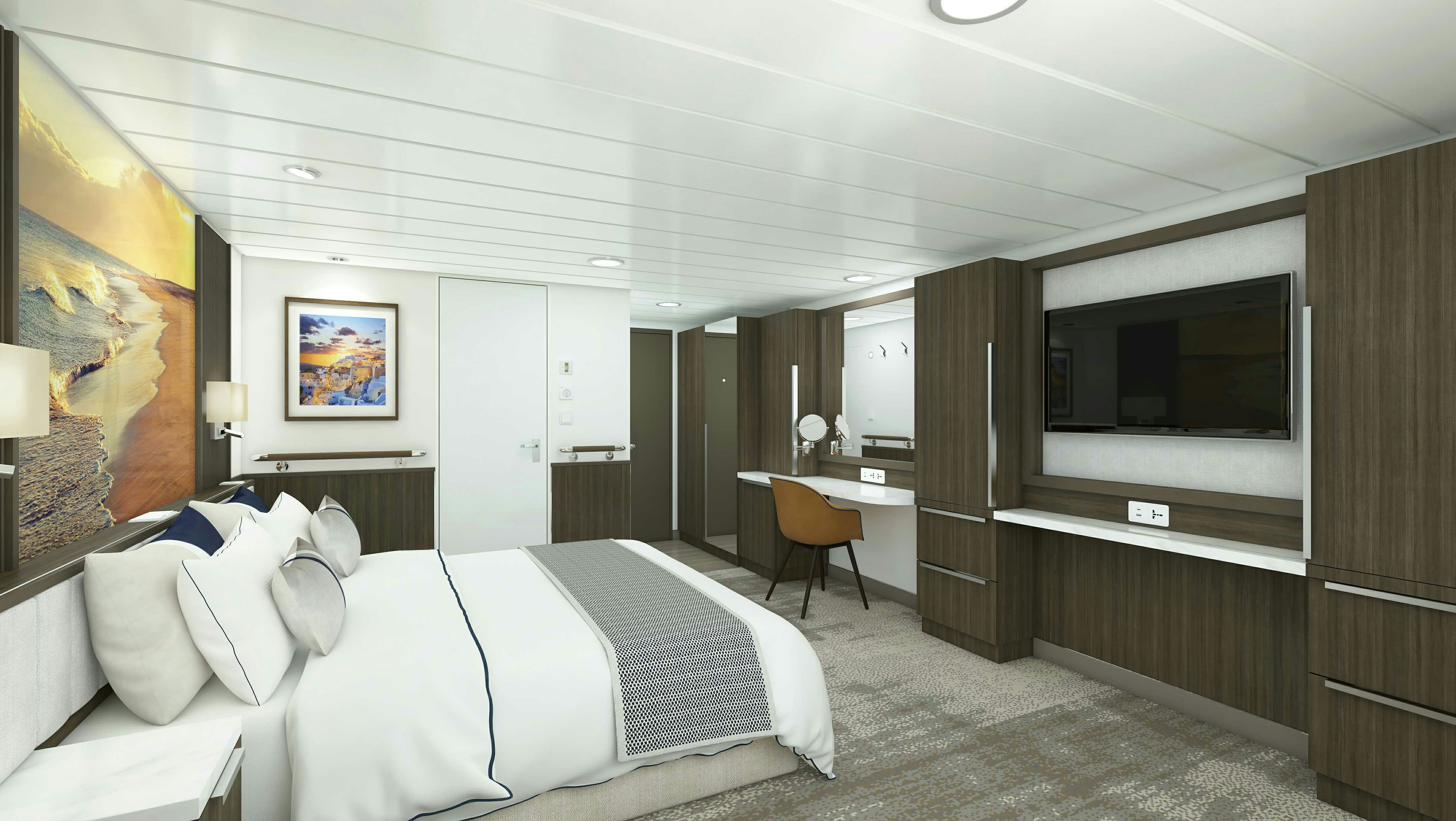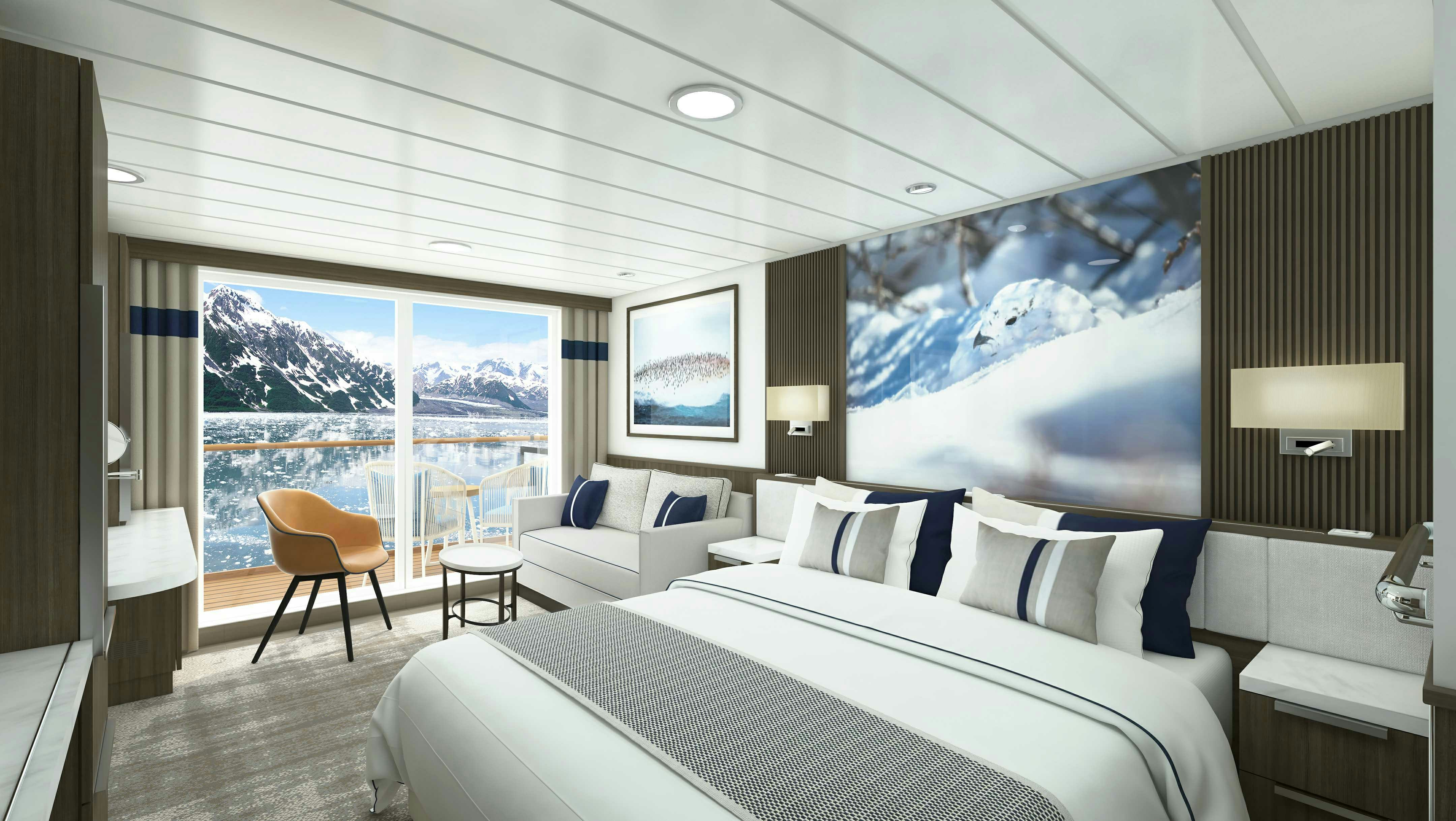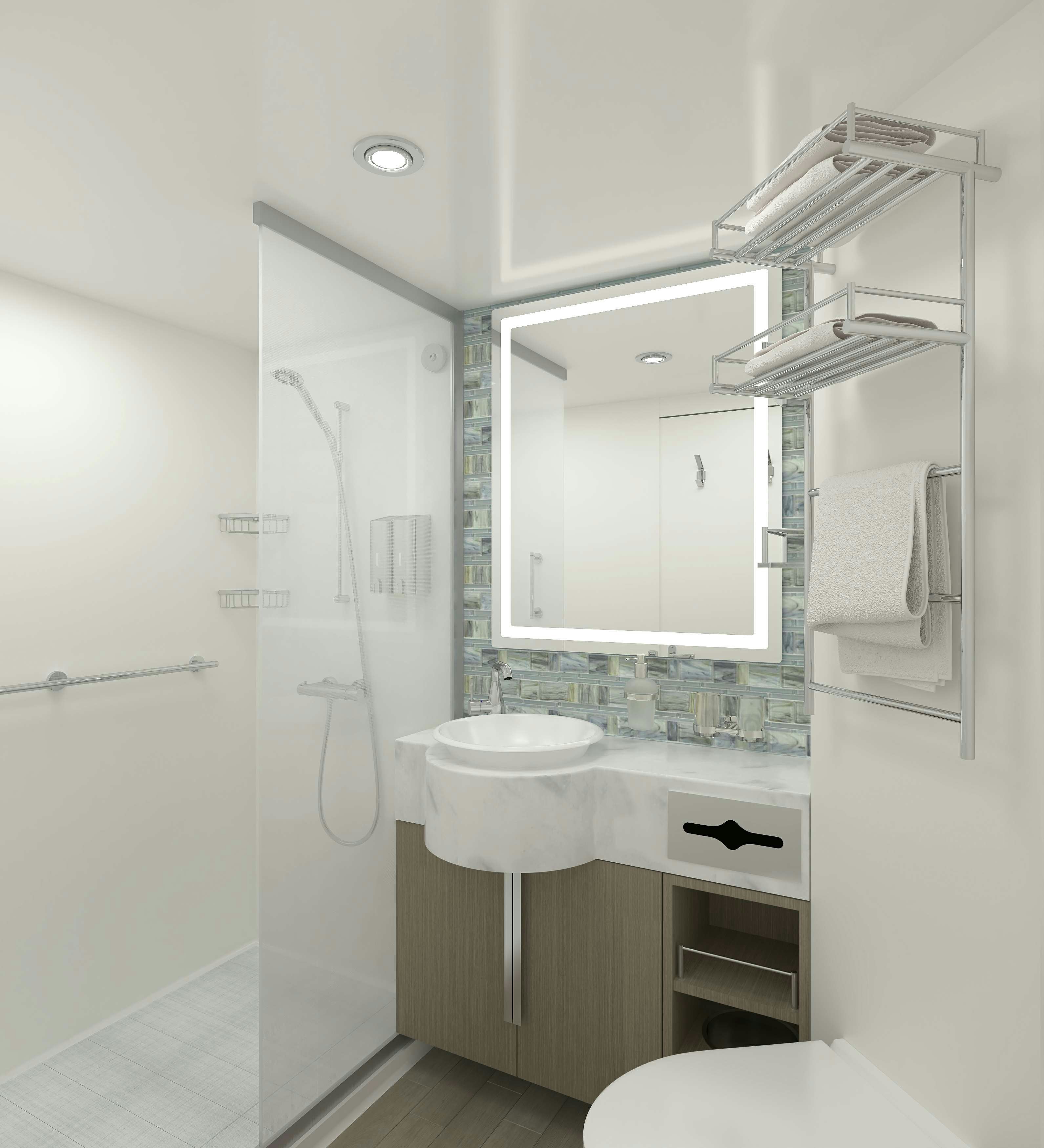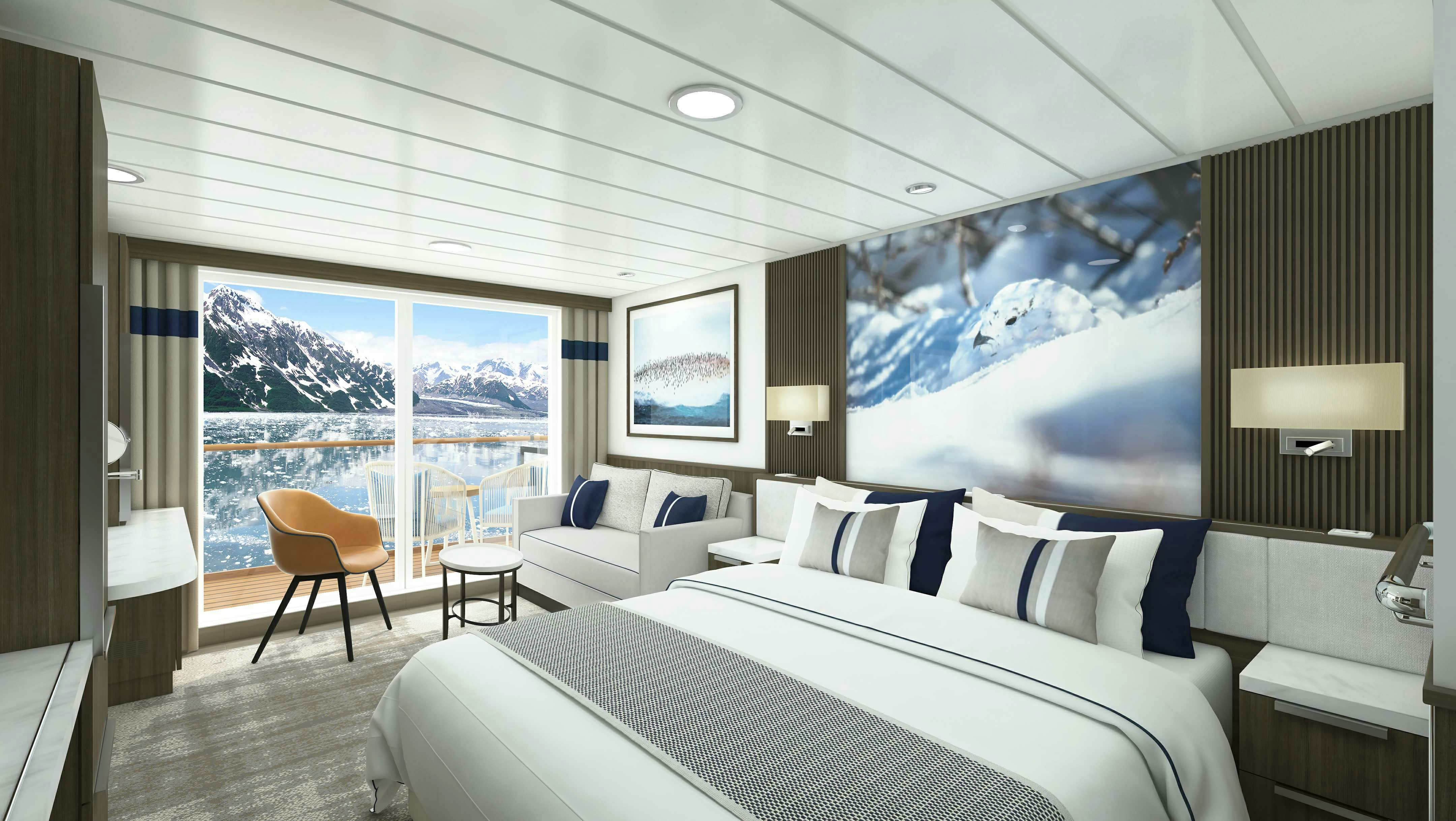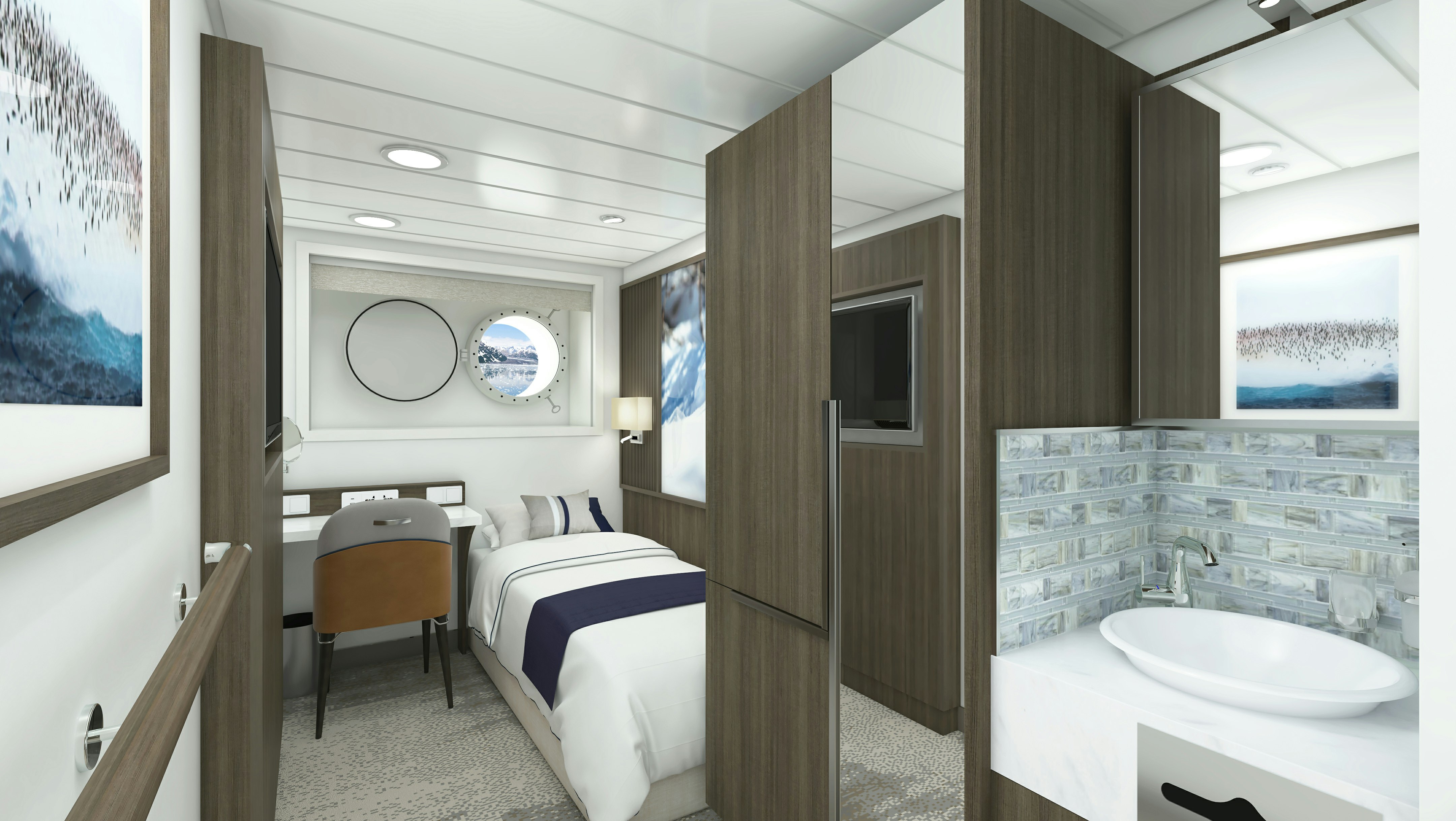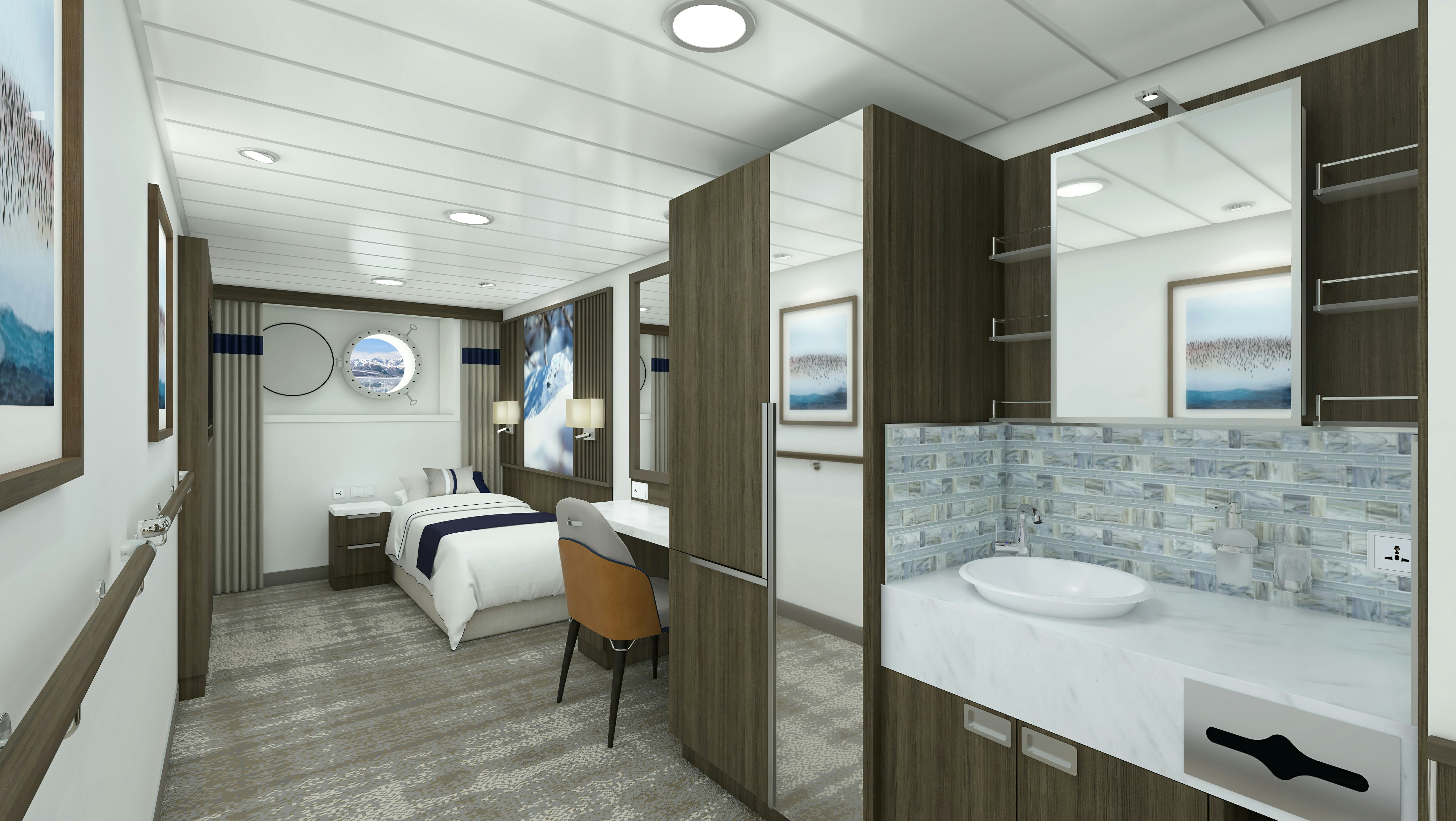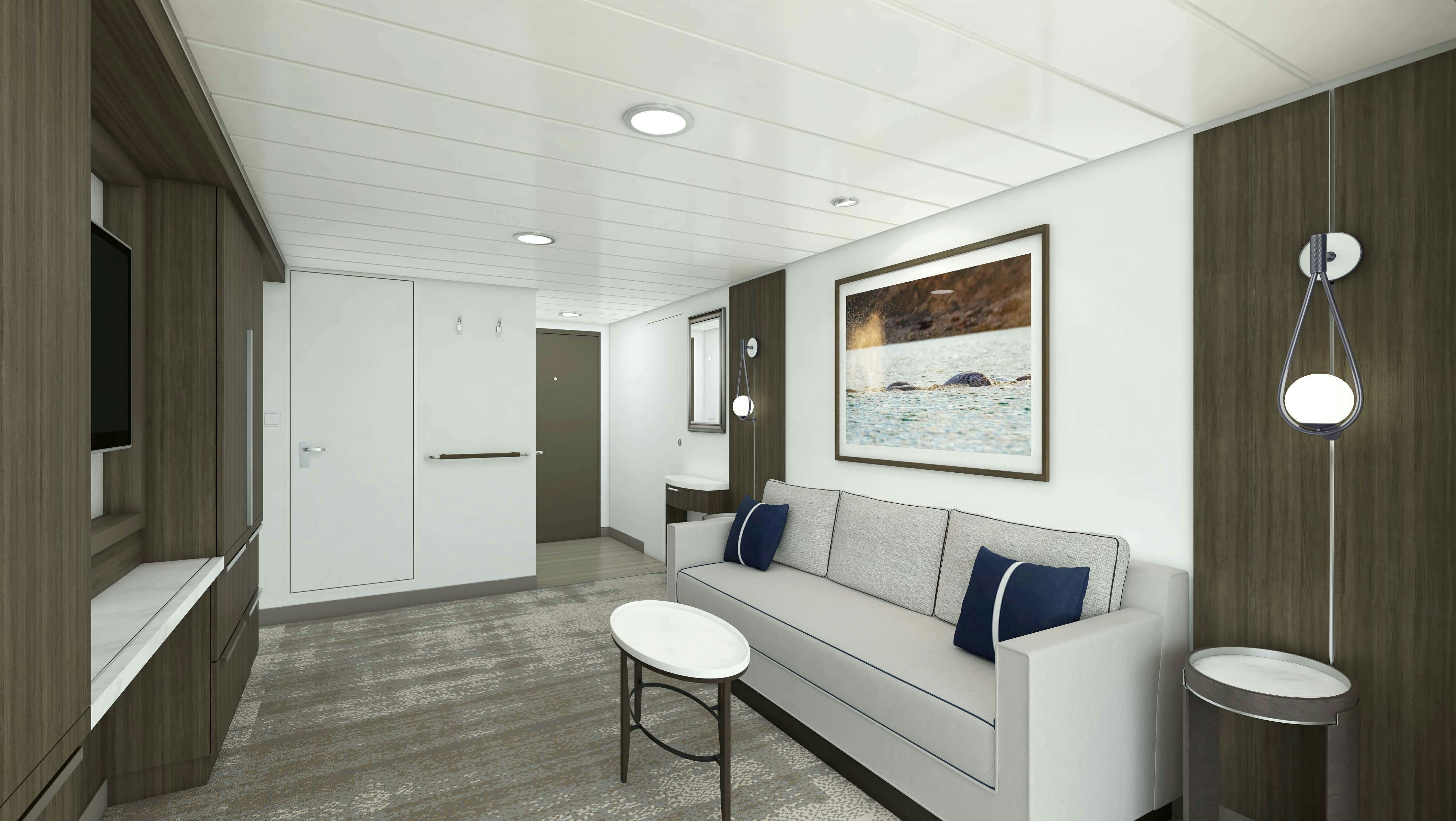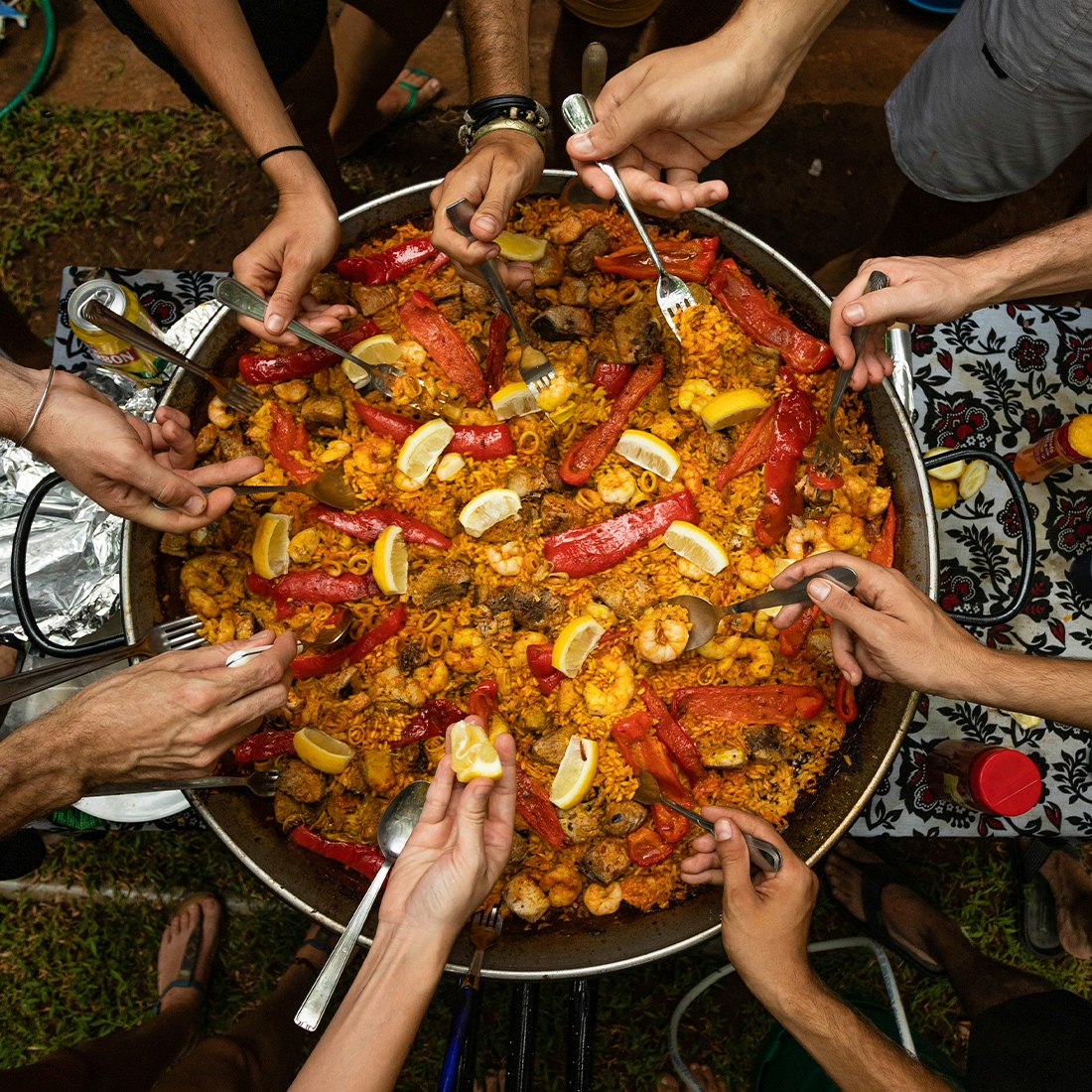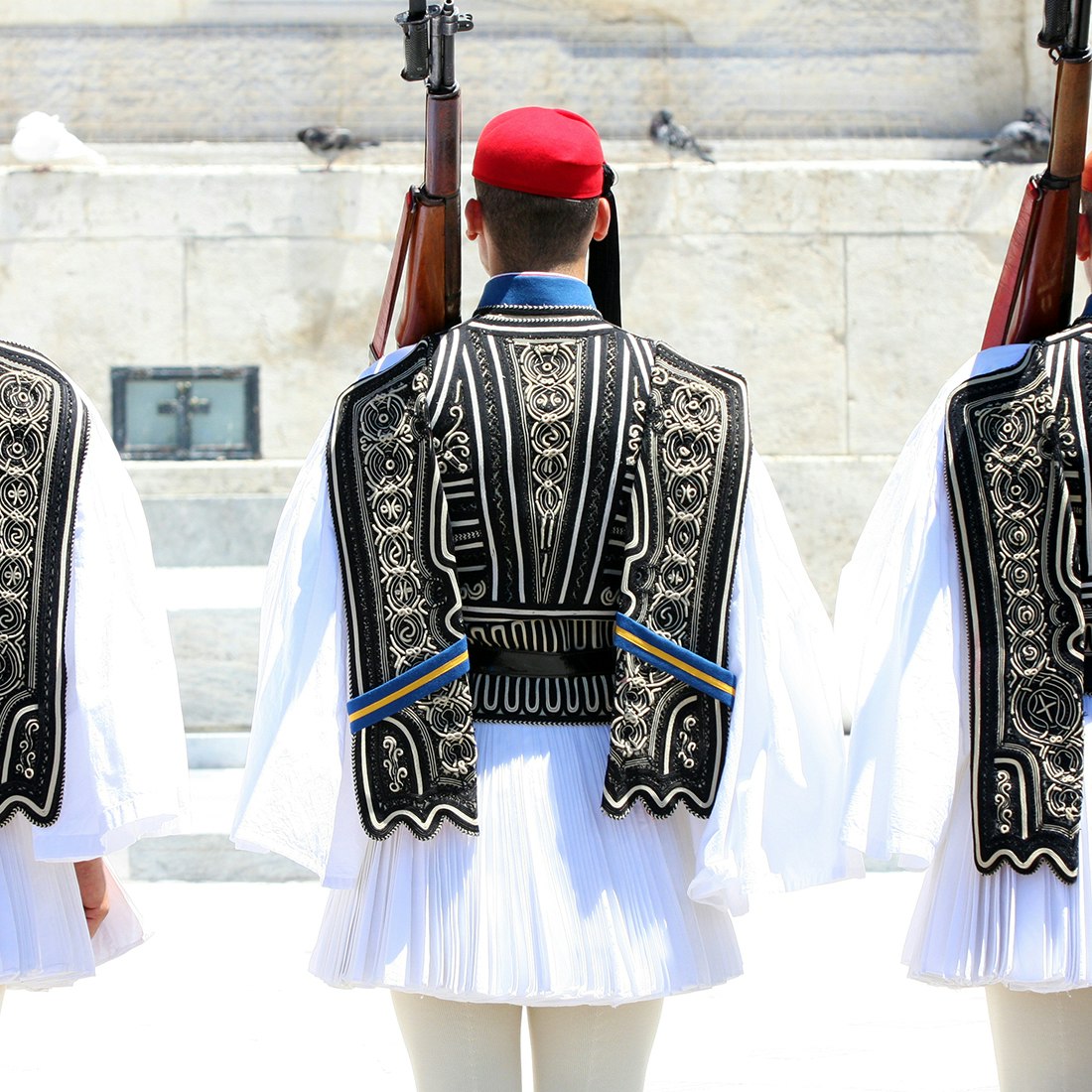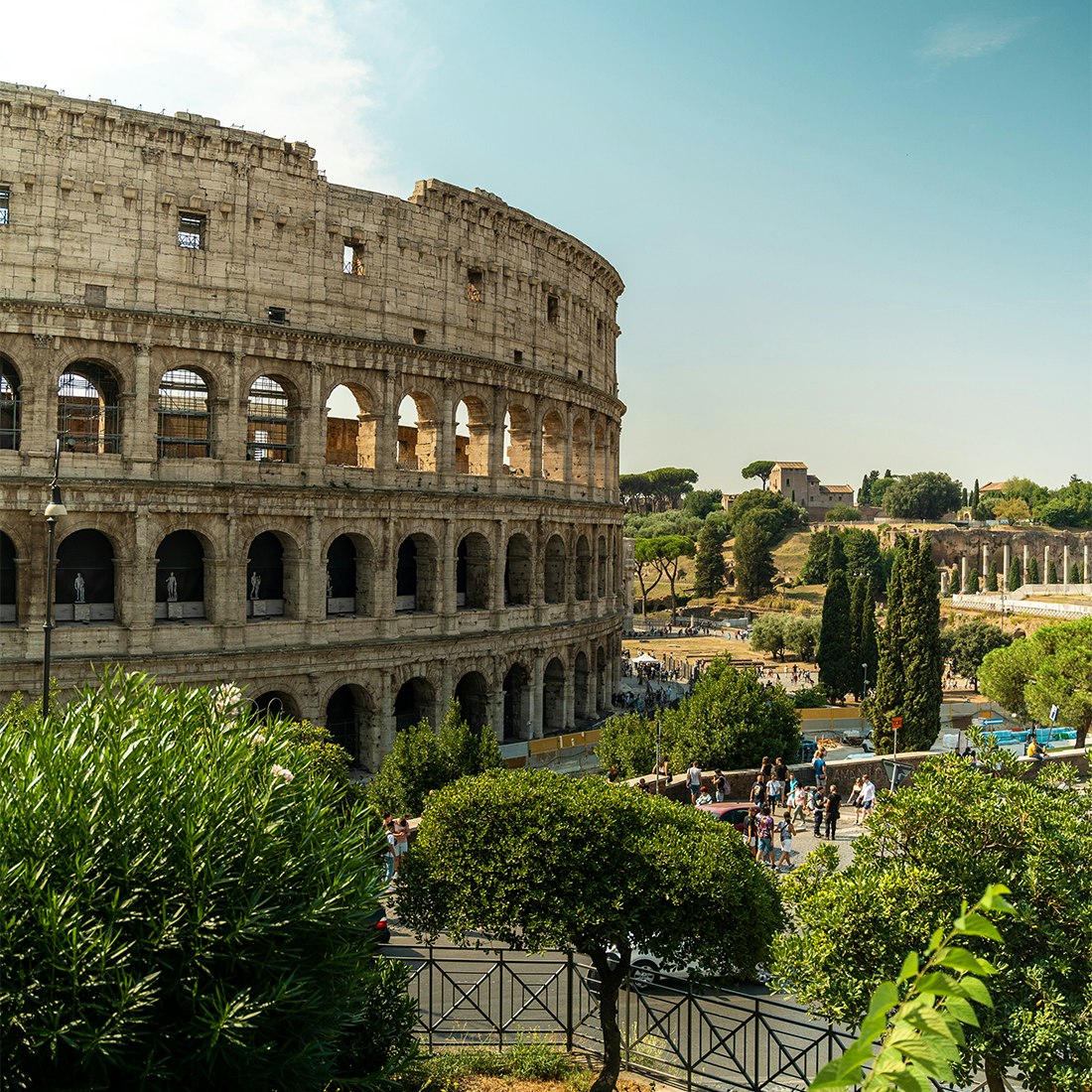Welcome to Malta. On arrival at Valletta Airport make your way to the Arrivals Hall to meet our representative, followed by a transfer to our group hotel. At the hotel, visit our hospitality desk in the lobby to meet our team who will provide you with useful information regarding pre-embarkation procedures and about your time in Valletta. You will also receive cabin tags for your luggage. Please clearly label the tags with your name and your cabin number on the ship. Today offers time to relax in preparation for our journey.
Accommodation: Valletta Hotel
Sitting in the centre of the Mediterranean, Malta boasts unbeatable location, location, location. Its sunny charm and island lifestyle have made it a modern-day summer holiday destination, but historically, its strategic position has made it a target for invaders. The Maltese people, known for their convivial and family-oriented nature, have a long history of defending their homeland, from ancient Greek sieges to Napoleon’s forces. Their remarkable bravery during World War II, particularly during the Second Siege of Malta, earned the nation the George Cross from King George VI. This honour is proudly displayed on the Maltese flag and coat of arms, symbolising their enduring spirit and resilience.
Our morning is spent in Malta’s convivial capital, Valletta, which remains a historical city with streets of fascinating sites telling more than their fair share of stories. Our local guide tells tales of the past and present at the Barrakka Gardens where we gain a perspective of the city’s harbour from a naval point of view before exploring the Grand Masters Palace and Armoury, where we uncover an impressive collection gathered by The Knights of St. John, while the multimedia show, Malta Experience, places thousands of years of Malta into perspective.
Your afternoon is free to enjoy the facilities at our hotel or stroll the streets of Valletta at your own pace. Join us for a Welcome Reception this evening, where we honour the bravery of the Maltese people and hear wartime tales of courage against seemingly insurmountable odds, from a local expert.
Accommodation: Valletta Hotel
Meals: Breakfast, Welcome Reception (drinks and canapés)
A second day in Valletta gives us the chance to experience more of Malta, when we venture into the island’s rural heartland, where we experience the resilient and welcoming spirit for which the regional Maltese are known.
Upon check-out we visit Mdina, Malta’s former capital and one of the island’s most atmospheric historic sites. Known as the “Silent City,” Mdina is a hilltop settlement with roots dating back over 3,000 years. The city’s mix of medieval and baroque architecture, quiet streets, and commanding views make it a 'must see’. A short introduction from our local guide will outline the city’s history, from its time as a Roman municipium to its later role as a stronghold for Malta’s nobility. After an introduction from our local guide, you’ll have free time to explore at your own pace, perhaps visit St. Paul’s Cathedral, walk the bastions, wander the shops or enjoy lunch (own expense) in an authentic Maltese restaurant.
We’ll then continue to a nearby boutique winery, located in the countryside just outside Mdina. With most Maltese wineries being small, family-owned estates, our visit offers an insight into country’s rural lifestyle. We’ll tour the vineyard and cellar, learn about their production methods, and enjoy a guided tasting of several wines, accompanied. It's a relaxed and informal setting, offering a chance to experience another side of Maltese life, before we return to Valletta to board the Douglas Mawson and begin our voyage.
This evening, enjoy a ‘Welcome Dinner’ where we meet our AE Expeditions team and crew.
Sitting on Sicily’s east coast, Catania’s gritty vibe stems from fire and salt. As the island’s second-biggest city, tucked at the foot of Mount Etna, old lava flows line the outskirts while the volcano looms like a restless neighbour. The city’s port remains a vital part of its identity, just as it was during World War II, when Catania became a key target in the Allied push through Sicily.
Today, the city is bold, a little rough around the edges, and buzzing with energy; all themes reflected in our ‘Your Choice’ experiences, from exploring Etna’s distinctive wines born from its fiery soil, to discovering the hilltop resort town of Taormina and walking in the footsteps of the Allied soldiers who liberated the island in World War II.
Personalise your exploration with our included ‘Your Choice’ experiences.
Option 1 ‒Morning experience: Operations Husky – liberating Sicily
In July 1943, the winds of war swept across Sicily as Allied forces launched Operation Husky, a daring invasion that would change the course of history. Over 160,000 troops from the USA, Britian and the Commonwealth, landed on the island’s shore. For five relentless weeks, Sicily became a battlefield with house to house and hand to hand combat commonplace. But from that turmoil came liberation. Mussolini’s regime crumbled, and the tide of World War II began to turn.
Located in downtown Catania, the Museo Storico dello Sbarco preserves the memory of that moment with haunting clarity. Housed in the Le Ciminiere complex, the museum immerses visitors in the emotional weight of war, through bomb shelter simulations, personal artefacts, and powerful imagery, gifting visitors an insight into the lives of the soldiers and Sicilians during this dramatic period in history.
Option 2 ‒Morning experience: A winery with a volcanic twist
Today, we explore the volcanic soils of Mount Etna, with a twist. Wine production has been central to Sicilian culture since the time of the Romans, and this tradition lives here with a blend of heritage and innovation. Vines flourish on Etna’s mineral-rich lava soils, ideal for native grapes like nerello mascalese and carricante. Enjoy a guided tasting with panoramic views and discover how Sicily’s ancient wine legacy continues to evolve, rooted in the land, yet forward-looking in spirit.
Option 3 ‒ Half-day experience: Taormina
Topped by an ancient Greco-Roman theatre, with spectacular views of Mount Etna, the hilltop enclave of Taormina is at the top of the list when it comes to visiting Sicily. Once a holiday resort for Greeks and Romans, it attracted numerous foes, however today it fights a different form of invasion with the town performing solidly on the Hollywood A-lister bucket list. Its luxurious hotels, restaurants and tile-terraced piazzas appear on the front page of Vogue, and with views across the Mediterranean, no wonder it is a ‘must see’ for all travellers to Italy.
We sail in the wake of Europe’s most prosperous trade routes, cruising along Italy’s stunning southern coastline. Today offers the perfect opportunity to slow your pace. Join our host to uncover the stories of this captivating region, unwind in the rejuvenating sauna, or lose yourself in a good book from our well-stocked library. As evening falls, we’ll come together to share more tales from the Mediterranean, before settling in for a peaceful night’s rest.
The port city of Brindisi is steeped in Roman history, as the once famed final stop on the Appian Way, Rome’s main route to the East. This strategic port was vital for trade and military operations, even hosting Julius Caesar and his army when they landed here in 49 BC, leading to his legendary showdown with General Pompey. The harbour’s ancient docks and towering Roman columns serve as lasting reminders of its past, while echoes of its role as a major naval base still linger. Brindisi’s blend of ancient ruins and coastal charm lets you walk in the footsteps of Roman legions and feel the pulse of history.
Our ‘Your Choice’ experiences showcase it neighbours unique attributes, with a visit to a vineyard, a tour of the Renaissance town of Lecce, or a wander through the Trulli houses of Alberobello all on offer, before we sail the Adriatic to Montenegro in the late afternoon.
Personalise your exploration with our included ‘Your Choice’ experiences.
Option 1 – Morning experience: Brindisi’s liquid gold
Today, we journey into the sun-soaked countryside surrounding Brindisi for a visit to a local winery. This region, with its rich, calcareous and clay-based soils, has been ideal for grape cultivation since Roman times — when the Appian Way, Rome’s most important ancient road, ended right here in Brindisi. Wine production here has deep roots, with the area historically known for bold reds and fragrant rosés made from native grapes like Negroamaro, Malvasia Nera, and Primitivo.
At the winery, we’ll tour the vineyards and cellars, learning how ancient techniques blend with modern practices, before enjoying a guided tasting of several wines, each thoughtfully paired with local delicacies.
Option 2 – Morning experience: Lecce
Heralded as the ‘Florence of the South’, Lecce lies just 30 minutes from Brindisi and is a jewel of southern Italy. Our visit begins with a short walking tour led by a local guide, who will introduce us to the city's rich history and striking baroque architecture. Then, we’ll have free time to explore at our own pace.
Lecce played a key role in spreading Renaissance and baroque influences from the powerful northern duchies to the southern peninsula. The city flourished as a center of artistic and architectural innovation, drawing scholars, artists, and architects who helped shape its unique cultural identity. Its elegant golden limestone façades and the intricately decorated buildings around Piazza Sant’Oronzo reflect this legacy. At the heart of the square stands the Colonna del Santo Patrono, built in thanks for deliverance from a 17th-century plague. Lecce also delights with lively markets, traditional festivals, and irresistible local treats like rustico leccese and pasticciotto, best paired with a glass of Primitivo. Whether admiring its architectural wonders, savouring its culinary delights, or simply soaking in its laid-back charm, Lecce offers us a cultural fix in the heart of Puglia.
Option 3 – Half day experience: Trulli Unique Alberobello
A one-hour drive takes us to the unique town of Alberobello, where our local guide introduces us to its streets lined with enchanting trulli houses. These whitewashed limestone dwellings with their conical roofs, are a UNESCO World Heritage Site and symbolise the region’s rich architectural heritage. Strolling through Alberobello’s narrow lanes makes you feel like you’re in a fairytale village. The story behind the trulli is as fascinating as their appearance. Their cone-shaped roofs, constructed without mortar, allowed residents to dismantle the houses quickly – an ingenious form of tax evasion during medieval times when property taxes were levied based on the number of permanent dwellings. Today, Alberobello is more than just a historical curiosity; it is a vibrant town where we can explore local crafts, savour traditional Apulian cuisine and immerse ourselves in the magical ambience of this wonderfully quirky town.
Early morning we enter the fjord system leading us to the bayside city of Kotor. Montenegro’s Bay of Kotor boasts stunning steep cliffs descending to a narrow inlet of the Adriatic Sea. Unlike true fjords shaped by glaciers, this bay is a ria — formed when rising sea levels submerged an ancient river valley. Characterised by its branching outline and large estuary, a ria like the Bay of Kotor offers exceptional natural harbor conditions. The bay’s unique bay-within-a-bay configuration, featuring the 300-meter-wide (approximately 984 feet) Verige Strait, adds to its striking beauty.
The boutique Balkan country of Montenegro, famed for its rugged mountains and stunning Adriatic coastline, is home to one of the region’s most enchanting destinations: Kotor. This historical town is packed with medieval charm. Surrounded by towering limestone cliffs and clear waters, the bay itself is a UNESCO World Heritage Site. The people of Kotor and Montenegro are known for their warm hospitality and deep connection to their land and traditions. Montenegrins take considerable pride in their history and cultural heritage, which is reflected in their vibrant festivals, local cuisine, and traditional music. The city’s history, coupled with the stunning landscapes of the fjord and the genuine warmth of its people, makes Kotor a highlight of any voyage.
Our tenders transfer us ashore from our point at anchor in the Fjord to Kotor, where we find a selection of ‘Your Choice’ experiences, with time this afternoon to take in the views from the deck of the Douglas Mawson or explore independently.
Personalise your exploration with our included ‘Your Choice’ experiences.
Option 1 – Morning experience: Vistas of Kotor
Our morning begins with a guided introductory walking tour through the charming streets of Kotor’s Old Town, where we pass endless medieval architecture and delve into 2,500 years of history. We visit the iconic St. Tryphon Cathedral, a masterpiece that dates to the 12th century, and hear tales of the city’s past. After soaking in Kotor’s enchanting atmosphere, we drive to the base of the cable-car station and embark on a 10-minute scenic cable-car ride, which offers the stunning views of Boka Bay. Ascending the summit of Lovćen Mountain, be prepared to be captivated by sweeping views of Kotor, the Bay of Kotor, and the surrounding landscapes.
Option 2 – Morning experience: A Taste of Kotor
Experience Kotor with an added touch of local flair on a locally guided wine and food tour. This journey immerses you in Montenegro’s culinary traditions, beginning with home-cooked local specialties made with passion and dedication. Delve into the town’s history on a walking tour before exploring the bustling marketplace, the heart of Kotor, where we sample locally cured smoked ham, cheese, and olives.
Upon arriving at one of the city's cobblestoned squares we sample olive oil, homemade spreads, and freshly baked bread. Savour local favourites like black risotto and mussels in “buzara” sauce, all of which connect you to the rich culinary heritage of the coastal Balkan region. To complete our morning, choose to enjoy a Montenegrin wine, beer, or grappa, for a taste of Kotor’s delicious local flair.
Option 3 – Morning experience: Boka Bays’ Waterfront Wonders
Experience the beauty of Boka Bay on a scenic speedboat cruise, when we visit waterfront villages, church studded islands and some rather unique tunnels. Begin your journey at Our Lady of the Rocks, a solo Baroque church sitting on a manmade islet in the Bay of Kotor. Here, you will find an original church built in 1452, adorned with 68 magnificent paintings by Tripo Kokolja. Our cruise continues to Perast, a charming Baroque village known for its rich maritime heritage. Stroll its cobblestone streets, where historical stone houses reflect the town’s prosperous past. The centrepiece is the grand Cathedral of St. Nicholas, a striking 18th-century structure that dominates its famous skyline.
From Perast, our speedboat takes us to the intriguing Submarine Tunnels constructed by the Yugoslav Army, cleverly camouflaged with fake rocks to remain hidden from view, before we journey to Prčanj, a picturesque seaside town celebrated for its 17th- and 18th-century stone villas, remnants of its prosperous history as an administrative centre of the Venetian Republic. Finally, we visit the Church of St. Nicholas and the Franciscan Monastery at the foot of Mount Vrmac, where we learn about the Franciscan monks and the town’s notable explorer, Ivan Visin, the first Croat to circumnavigate the globe.
Sailing east across the Adriatic, we meet the Croatian coast at the walled city of Dubrovnik, where our ‘Your Choice’ experiences offer an opportunity to view the city from ground level on a walking tour, or above from its city walls. Your afternoon is free to explore the city independently before catching our tender back to the ship. We sail north to Korčula early evening.
This stunning walled city boasts a history spanning over a millennium. Founded in the 7th century, Dubrovnik thrived as the Republic of Ragusa, a prominent maritime power. Its strategic location encouraged trade across the Mediterranean, with the associated wealth shaping its unique blend of architecture and culture. Throughout its history, Dubrovnik faced periods of prosperity and challenges, including conflicts with rival states and invasions. The city’s formidable defensive walls, begun in the 9th century and expanded in the 14th and 15th centuries, symbolise its strategic significance. In modern times, Dubrovnik gained global recognition as a filming location for motion pictures such as Game of Thrones, where its ancient walls and historic streets provided the backdrop for King’s Landing. Today, Dubrovnik’s well-preserved medieval architecture, including churches, monasteries, and palaces, continues to attract visitors seeking to explore its rich heritage and cinematic allure along the scenic Adriatic coast.
Personalise your exploration with our included ‘Your Choice’ experiences.
Option 1 – Morning experience: Walking Dubrovnik
Begin your day with a leisurely walking tour through the enchanting streets of Dubrovnik’s Old Town, where centuries of history whisper from every stone. Led by a knowledgeable local guide, you’ll uncover tales of the city’s vibrant past and present, without the steep climbs or strenuous pace.
Rather than scaling the city walls, you’ll meander through the charming lanes and lively squares, pausing at iconic landmarks like the grand Pile Gate, built in 1537 and watched over by a statue of St. Blaise, Dubrovnik’s beloved patron saint. Wander down the bustling Stradun, the city’s main promenade, lined with elegant shops, cosy cafés, and architectural gems. Along the way, marvel at Onofrio’s Fountain, the serene Franciscan Monastery, home to Europe’s oldest pharmacy, and the stately Rector’s Palace, a masterpiece of Gothic-Renaissance design. This tour is perfect for those who want to soak in the soul of Dubrovnik at a relaxed, unhurried pace.
Option 2 – Morning experience: Walking Dubrovnik and its City Walls
Experience the essence of Dubrovnik with a locally guided walking tour including walking it city walls. Stretching over one mile in length and rising 24-metre (80-feet) high, these walls offer panoramic views of the Adriatic Sea and the terracotta rooftops below. From the northern Minčeta Tower to Fort Bokar at the southwestern corner, and ending at Fort St. John by the Old Harbour, the walls provide insights into Dubrovnik’s resilience, contrasting with remnants of shelling damage from the 1990’s conflict. Explore forts and towers, each steeped in history, while glimpsing into hidden gardens and courtyards along the residential fringes. A walking tour of Dubrovnik’s Old Town and city walls promises an unforgettable journey through time.
We arrive at the island of Korčula, where our ‘Your Choice’ experiences fill your morning, before we sail north mid-afternoon with our eyes set on Split.
At 48 kilometres (30 miles) long and 8 kilometres (5 miles) wide, Korčula is one of Croatia’s smaller islands, yet its population of 15,000 makes it the country’s second most populous. Often referred to as ‘Little Dubrovnik’ for its medieval squares, churches and palaces, Korčula is steeped in Venetian architectural influence, a legacy of the stonemasons who flocked here during the Venetian era. The island is covered in dense woods and lush Mediterranean shrub, its coastline hiding many pristine bays and coves, whose numerous small villages produce olive oils, liquors, and some of the best white wines in Croatia; notably Grk and Pošip, which can only be enjoyed locally.
Korčula’s most notable claim to fame is as the birthplace of the indomitable explorer Marco Polo, with his legacy celebrated through place names and a dedicated museum. Cultural traditions thrive here, especially the Moreska sword dance, a captivating 16th-century performance, and Klapa, a popular form of cappella singing. With its blend of Adriatic charm and cultural heritage, Korčula offers a unique glimpse into the heart of Dalmatian life, making it a top destination for travellers to Croatia.
Personalise your exploration with our included ‘Your Choice’ experiences.
Option 1 – Morning experience: Walk Old Korčula Town
Join our introductory walking tour of Korčula’s medieval walled Old Town this morning, led by a local guide. Starting directly from the pier, just 50 metres from one of its gates, we enter the meticulously laid out Old Town, designed in a fishbone pattern, with 26 cobblestone streets that naturally harness cooling winds.
Our walk includes a visit to the Cathedral of St. Mark, showcasing the exquisite craftsmanship of Korčula’s renowned stonemasons, whose work adorns buildings worldwide. Explore the Bishop’s Palace to uncover its hidden treasures, including sketches and drawings attributed to Leonardo da Vinci, Michelangelo, Raphael, Tiepolo, and others. We will also visit the charming Church of All Saints, home to a remarkable collection of Byzantine icons. Korčula is celebrated as the birthplace of Marco Polo, and you can glimpse the exterior of his alleged birth house during our tour.
Option 2 – Morning experience: Rural Korčula and Boutique Wine Tasting
Start your tour with a scenic drive through Korčula’s beautiful Mediterranean landscape. Korčula Island is famous for its white wines, making this tour perfect for wine lovers seeking an authentic local experience. After a short drive, you will reach Tasovac Winery, an award-winning, family-owned estate offering a traditional coastal atmosphere and a tasting of their exquisite wines.
Our scenic drive passes through small villages and vineyards, until we arrive at Toreta Winery, located in the heart of Korčula Island. Korčula is renowned for its indigenous grapes, Grk and Pošip. The village of Lumbarda is famous for its Grk wines, while the island’s interior villages are known for their Pošip wines, often compared to sauvignon blanc and chardonnay. Toreta Winery, a small boutique estate, is celebrated for its exceptional wines, liqueurs and olive oil. Here, you can also see old agricultural tools used for generations. After tasting, we return to Korčula town.
Option 3 – Morning experience: A Taste of Korčula
Our morning starts with a short walking tour of Korčula town. We enter the meticulously laid out Old Town, designed in a fishbone pattern, with 26 cobblestone streets that naturally harness cooling winds. We uncover the town’s hidden treasures among its laneways and alleys, churches and bell tower, waterfront walls and eclectic shopfronts. Our journey continues as we leave town and head up the road to one of Korčula’s latest treasures.
Located a mere two kilometres from Korčula town, OPG Komparak greets visitors with a 300-year-old row of cypress pines shadowing a private entrance. This small distillery began production in the winter of 2020 amid a honey deficit. Beekeeper Vlaho Komparak, inspired by the abundance of bitter oranges in Korčula gardens, created Trut gin. Honey is added before distillation to unify the aroma, and each bottle is dipped in beeswax. The first flavour, ‘Signature’, won silver at the Berlin International Spirits Awards, and since then, this sweet gin has become a Korčula success story. We enjoy the Honey & Gin Experience at this organic farm, featuring an active beehive, gin distillery and olive oil production. We combine a tour of the farm with a tasting of honey, olive oil, marmalade, and the award-winning Trut gin.
Dubrovnik’s northern neighbour, Split, offers a plethora of experiences, with the city itself deserving an exploration.
Split's blend of ancient sites and modern delights promises a rich experience at every turn. This 1,700-year-old living museum is now a UNESCO World Heritage Site and one of the most important ports on the Adriatic Coast. Split's heart beats within Diocletian's Palace, commissioned in the 4th century AD by the Roman Emperor himself, seamlessly blending ancient grandeur with modern-day markets, cafés, and shops. While you are here, be sure to rub the big toe of the Grgur Ninski statue. Sculpted by Ivan Meštrović, this massive statue is one of the defining images of Split. The 10th-century Croatian bishop, Gregory of Nin fought for the right to use old Croatian in liturgical services instead of Latin. His left big toe has been polished to a shine – it’s said that rubbing the toe brings good luck and guarantees that you will return to Split.
Choose to walk the compact ‘Old Town’ at your own pace of join our local guided tour. Our local guide walks us through Split’s Old Town, where we visit the 4th-century Roman palace built by Emperor Diocletian as his retirement residence. More than just a grand home, the palace formed the heart of a fortified town, Split's very origin. Its strategic coastal location made it an important Roman port and administrative centre, connecting the empire to the eastern Adriatic. The city's Roman legacy is still clearly visible today: the street layout follows Roman design, and fragments of ancient columns and walls are woven into the fabric of daily life.
Our small ship size allows us a berth nearby the Old Town, and an easy return to the ship for lunch.
This afternoon, we immerse ourselves in a Croatian tradition, with an onboard concert by a klapa group. Inscribed in 2012 on the Representative List of the Intangible Cultural Heritage of Humanity by UNESCO, klapa is uniquely Croatian. This multipart a cappella tradition from southern Croatia’s Dalmatia region features groups of singers, including first tenors, tenori, baritoni, and basi. Performers stand in a semicircle, with the first tenor initiating the song, to create a harmonious blend of voices. Often dealing with themes of love and local life, klapa songs are performed using open guttural, nasal and falsetto techniques without notation. The tradition, passed down orally, includes ‘traditional klapa’ for its adherence to custom, ‘festival klapa’ for formal performances, and ‘modern klapa’, where younger singers learn through experiences and recordings. Klapa singing remains a vital marker of musical identity in local communities in Croatia, with several groups calling Split home.
Nestled along Croatia’s Adriatic coast, Šibenik is a historic gem known for its medieval charm, winding stone alleys, and impressive coastal views. Founded by Croats, it boasts a rich heritage and is home to the UNESCO-listed St. James Cathedral. Its striking architecture and dramatic fortresses also caught the eye of filmmakers — Šibenik appeared as the city of Braavos in Game of Thrones, with the cathedral and St. John’s Fortress featured prominently in several scenes.
This morning, choose your favourite from our ‘Your Choice’ experiences, including visits to natural wonders and a UNESCO World Heritage site. In the afternoon, explore the historic charm of Šibenik independently, or relax on board. With Douglas Mawson berthed at the centrally located port, the old town and its captivating streets are just a short stroll away.
Personalise your exploration with our included ‘Your Choice’ experiences.
Option 1 - Morning experience: A UNESCO Feast – Trogir
A one hour drive takes us to the waterfront town of Trogir, a UNESCO World Heritage Site since 1997. Squeezed between the mainland and the larger island of Čiovo, Trogir is a veritable open-air museum. Our locally guided introductory tour follows passageways lined with medieval buildings, Renaissance-era palaces, stone houses, churches and towers. Each alleyway is lined by eclectic craft shops, restaurants and bars, making a stroll through Trogir a highlight of any visit to Croatia. There is time to explore independently, before we return to Šibenik, having filled our morning with UNESCO World Heritage Sites.
Option 2 - Morning tour: Krka National Park- a Water Wonderland
This morning, nature enthusiasts are in for a treat as we head inland to explore one of Croatia’s natural treasures on foot — arguably the best way to take in its breathtaking landscapes. Spanning 109 km², Krka National Park is home to over 1,000 plant species and more than 200 bird species. Its 17 travertine waterfalls flow along the Krka River, which descends 238 metres (780 feet) from its source in the Dinaric Mountains. Extensive wooden walkways lead us through lush greenery and past waterfalls that gush over moss-covered stones in powerful torrents, offering dramatic and unforgettable views. We’ll visit the park’s most iconic and impressive waterfall, Skradinski Buk. Stretching 400 metres (1312 feet) wide and nearly 46 metres (150 feet) high, its thunderous roar can be heard before it comes into sight. Well-placed vantage points provide sweeping views of spectacular cascades throughout the park, which is a dream setting for photographers.
Located in the Kvarner region of the northern Croatian Adriatic Sea, Rab is among the “greenest” Croatian islands, thanks to its mild climate. The island’s historical heart is the town of the same name, where medieval charm pervades its narrow streets. Many buildings date back to the 13th century, reflecting Rab’s years spent under Venetian rule. Climbing the Rab Bell Tower rewards visitors with views of the town and sea, offering a glimpse into the island’s storied past. Unique among Croatian islands, Rab is famous for its sandy beaches, particularly around the Lopar Peninsula. These golden shores, combined with the island’s historical allure, make Rab a captivating destination. *Rab is undergoing wharf reconstruction, which may make it possible for our vessel to berth in 2027.
Personalise your exploration with our included ‘Your Choice’ experiences.
Option 1 – Morning experience: Walking Rab and the Crossbowmen
Explore the enchanting island of Rab, known as the ‘island of happiness’. Begin your journey in the town of Rab, where medieval architecture meets Mediterranean life. Stroll through the cobbled streets and admire the town’s bell towers, including the iconic Cathedral of St Mary. Visit the impressive Prince’s Palace, a symbol of Rab’s historical significance, where you hear stories of the island’s past. As you wander through the main square, don’t miss the statues of Draga and Kalifourni, which tell tales of these local legends.
A highlight of your tour is meeting a member of the town’s legendary crossbowmen association. The original crossbowmen played a crucial role in Rab’s defence during the Middle Ages. Learn about their fascinating history, traditions, and the importance of their craft as you see their traditional weapons and hear stories of their ancestorial valour.
Option 2 – Half-day experience: Rab Peninsula Scenic Cruise and Beach Stop
Explore the Rab Peninsula during this half-day water-based excursion. A 30-minute boat ride takes us to the Rab Peninsula. Here, almost hidden in a little bay, lies the St Bernardin Monastery, still known by locals as the ‘St Euphemia Monastery’. Upon arrival, take a guided walking tour of this renowned historical landmark and its interior church, which were painted by Venetian painters throughout the 17th and 18th centuries. During your visit, view the ethnographic collection of old crafts, sculptures, paintings and books. After visiting the monastery, reboard our boat for a half-hour cruise to one of Rab’s popular beaches, where we enjoy a refreshment and free time for swimming prior to returning to our boat and journeying back to Rab town.
The Istrian Peninsula, nestled at the crossroads of Croatia, Slovenia, and Italy, is rich in Roman heritage. Today, we dock at the picturesque enclave of Rovinj, granting us access to both the town and its scenic surroundings.
We start with a morning experience before returning to the ship for lunch. With our boutique size we are at berth in Rovinj. The afternoon is yours to explore Rovinj’s charming streets, savour a cool drink at a waterfront bar, or relax on a nearby beach. We set sail in the early evening as the sun sets over the Adriatic.
Ancient ruins like well-preserved amphitheatres and its terrain, bearing witness to centuries of Roman influence. Istria's prized olive oil tradition underscores its Mediterranean charm, with groves dating back through the ages. The wealth brought by this 'liquid gold' to the former Roman colony still resonates today, making Istria a favoured holiday destination for Italians, Slovenians, and Croatians alike. Among its gems, romantic Rovinj shines as Istria's star attraction—a picturesque Mediterranean fishing port with morning markets, scenic cliffside views, renowned restaurants, beautiful beaches, and a year-round calendar of cultural events. Climbing the bell tower offers vistas of Rovinj's historic centre and the Adriatic Sea beyond.
Personalise your exploration with our included ‘Your Choice’ experiences.
Option 1 – Morning experience: Roaming Rovinj
We berth alongside Rovinj, one of the Mediterranean's most picturesque towns. Once part of the Venetian Republic for over 500 years, its Old Town is perched on a peninsula, adorned with terracotta-roofed houses and crowned by the 18th-century Church of St. Euphemia, whose bell tower dominates the skyline. Your locally guided walking tour begins in the town square and winds its way through the steep alleys lined with eclectic shops and water view cafes, leading to the hilltop St. Euphemia Church, modeled after St. Mark’s campanile in Venice. Take your time heading back to the ship — this charming village invites you to linger, with something delightful waiting around every corner.
Option 2 – Morning experience: Pula's Classic Colloseum
Board your coach for a half hour drive to Ancient Pula, founded by the mythical Jason and Medea. The port city of Pula is renowned for its well-preserved Roman heritage, most notably the Pula Arena, the sixth largest and one of the best-preserved Roman amphitheatres in the world. Built in the 1st century AD, it continues to host concerts and events today. The city's Roman Forum, Temple of Augustus, and Arch of the Sergii stand amongst the modern-day city as testament to its ancient past. Pula's strategic location on the Adriatic coast has made it a bustling port city since antiquity. Its current work-a-day atmosphere contributes to its charm as a working city, which has been its role since ancient times.
Option 3 – Morning experience: Istria’s Liquid Gold
Head to the Istrian countryside this morning on a search for Istria’s liquid gold. Olive oil production in Istria dates to Roman times when it was a significant contributor to the local economy. The region’s fertile soil and favourable climate made it an ideal location for cultivating olives, which were highly valued by the Romans for culinary and medicinal purposes. The trade of olive oil from Istria was a crucial part of the Roman economy, contributing to the prosperity of the region. Today, olive groves still dot the landscape, continuing this rich tradition.
We arrive at an award-winning olive grove specialising in growing olives and producing top-quality, extra virgin olive oils. Istrian olive oil is listed among the top 15 olive oils in the world and has been declared the 'most promising in the world' by the renowned guide 'L`Extravergine'. We learn about the fascinating production process during a guided tour of the property before enjoying an olive oil tasting accompanied by smoked ham, cheese, bread and wine. A scenic 30-minute drive returns us to Rovinj.
Disembarking this morning at the port of Rijeka we drive two hours north to Croatia’s vibrant capital city; Zagreb. Like a phoenix rising from its recent past, Zagreb has redefined itself with charm and creativity. Once shaped by Soviet-era concrete and uniform apartment blocks, the city has transformed its post-war legacy with vibrant street art, lively cafés, and a renewed sense of identity. The city’s upper town is rediscovering its Habsburg heritage, where cobblestoned streets, grand facades, and elegant church spires tell stories of a more ornate era. This blend of faded grandeur and modern flair gives Zagreb a distinct rhythm: relaxed yet full of life, historic yet forward-looking. It’s a city that doesn’t shout for attention; it draws you in slowly, revealing its layers one thoughtful step at a time.
Our locally guided introductory tour ends with time to explore the city centre at your own pace, before we transfer to our hotel.
Accommodation: Zagreb Hotel (or similar)
Meals: Breakfast onboard
This morning, check out of your hotel and say farewell to your fellow travellers, as you transfer to Franjo Tuđman Airport for your onward flight.
Meals: Breakfast


















